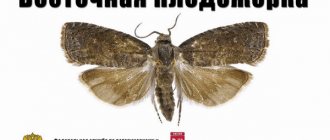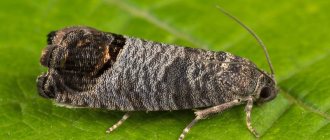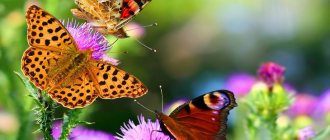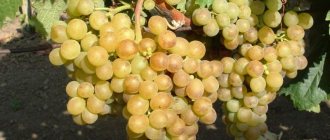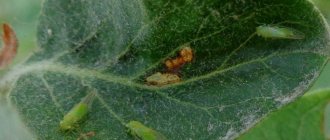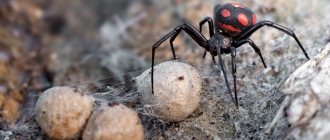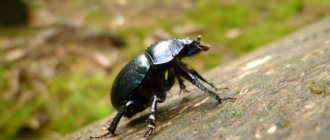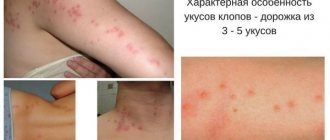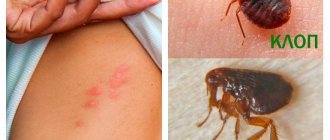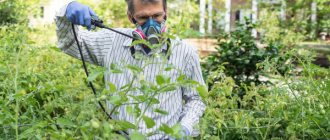Gardeners are seriously concerned: there is a threat of losing the harvest of fruit trees. And the culprit for this is the eastern codling moth. Why is this harmless-looking butterfly dangerous? The main danger is not only that this insect is capable of making devastating raids on gardens, but also that it is extremely prolific and can spread very quickly. Therefore, in order to save the remains of the harvest or be left without anything at all, it is necessary to prepare in advance to fight the harmful butterfly. And for this you need to know its lifestyle, reproduction characteristics, measures to combat it and methods of protection. More on all this below.
Features of reproduction
Having hatched, the caterpillars penetrate into the young shoots through the upper buds. They then chew out an exit hole, which they use to move on to the next shoot. The ability to feed inside a shoot is inherent only in the eastern codling moth - this distinguishes it from other similar pests.
Damaged branches begin to wither and subsequently dry out. Those larvae of the eastern codling moth that fall on the fruits bite into the pulp, unhardened seeds and seeds. Moreover, on one, for example, peach there can be up to 10 pieces.
After the caterpillars have finished feeding, they begin to pupate, choosing for this purpose damaged shoots, fruits or any other shelters in the crown of trees. After a short period of time, butterflies emerge from the pupae. In just one season, an adult butterfly can give 4-6 generations. Moreover, by the middle of the season, the first generation has already laid eggs, so you can encounter all stages of the harmful insect at the same time.
At a time when the codling moth begins to multiply en masse, it can completely destroy the entire crop of peaches, and 70-75% of quinces and pears.
Reader questions:
Do starlings on an apple tree eat caterpillars?
Although there is information circulating on the Internet that these birds feed on the caterpillars of this harmful insect, this is not so. They are pecked en masse only by different types of tits, and then only at the moment they emerge from the apples and crawl to their wintering areas.
Flowers protecting the apple tree from worms
Another “panacea” for worms in apples from the Internet, especially spread by supporters of “BIO-farming”, is planting special types of flowers under apple trees that scare and kill the pest.
It’s a pity, but this method cannot give anything other than disappointment and a crop lost from the pest, because biology is not “led” by fashion trends, and the butterfly does not die only from the smells of plants.
Regular treatment of apple trees against codling moths in the summer will provide many tasty apples in the fall and winter!
Signs of infection
- Medlar.
- Almond.
- Apple tree.
- Apricot.
- Cherries.
- Plum.
- Cherry.
It is not difficult to notice the appearance of a butterfly: in those places where the pest penetrates the fruit, gum appears, and the passages made under the bark are clearly visible. Caterpillars damage the fruits that have set, and before they have time to ripen, they fall off the tree. And those fruits that remain on the tree are usually already infected and quickly lose their marketable appearance, which is why they are rejected and not allowed for sale.
Geographical distribution
The homeland of the eastern codling moth is considered to be China, Korea and Japan. Nowadays, the pest belongs to species common in the subtropical and southern temperate zones. In the Russian Federation and in the post-Soviet space it is found in the Astrakhan region, Stavropol and Krasnodar, North Caucasus regions, Belarus, Ukraine, Moldova, Lithuania.
In Europe, the eastern codling moth has been recorded in Austria, Germany, France, Switzerland, Italy, Spain, Poland, Romania, Hungary, Bulgaria, and the Czech Republic.
The codling moth also originated from the warm climate of Eurasia. And since the main factors limiting the spread of the codling moth are average temperatures below +12°, today they can be found almost everywhere where apple trees are found.
Preventive measures
- Removing dead bark from large branches and trunks. If this is not done, then a huge number of caterpillars will remain overwintering under the bark, in cracks, and then next year it will be very difficult to fight the pest.
- Destruction of plant residues, including carrion. Moreover, you need to collect fallen fruits every evening and not leave them overnight: at night, the caterpillars crawl out of the carrion to move to the tree. Therefore, fallen fruits must either be destroyed or buried very deeply, at least 0.5 m.
- Disinfection of containers.
- Digging up the soil in autumn, spring and summer, when the eastern codling moth is in the pupal stage. Moreover, it is necessary to dig not only around tree trunks, but also between rows. Such a measure will significantly reduce the number of harmful insects on the site.
- Regular cutting and burning of damaged shoots.
In addition, it is necessary to arrange bait in the crowns to attract butterflies. You can also place catching belts made of corrugated paper, burlap or other materials soaked in chlorophos on supports and tree trunks in order to catch caterpillars that, having emerged from the crumbled fruits, are looking for a place for pupation or feeding.
Traps for oriental moths
Hunting belts are easy to make with your own hands. Any rags, corrugated paper, rubber, or plastic film are suitable for their manufacture. Plastic bottles are often used for young trees. The trapping belt can be a funnel, a trap with an adhesive surface, or a belt soaked in an insecticidal solution.
To make a funnel, you will need cardboard at least 20-25 cm wide, the length is determined by the thickness of the trunk. The upper part of the structure should fit snugly against the tree, and the lower part should retreat at least 5 cm. The trap is attached with rope, twine, and electrical tape.
The main advantage of dry fishing belts is environmental friendliness and safety. Such devices are most effective in the spring.
To prevent mass invasion, glue or insecticidal traps are used. To create the device, you need to moisten a rag 30-35 cm wide generously in an insecticidal solution. Wrap it around the trunk and cover it with film on top. Secure the entire structure with rope.
To build a sticky trap, wrap the trunk with paper and cover it with garden glue, tar, and resin. To protect fruit trees from the oriental codling moth, different types of traps can be used simultaneously.
Pheromone traps are also used for male moths. The main purpose of the devices is not so much to catch insects, but to determine the feasibility of carrying out pest control work. If more than 5 individuals are found in the trap, the trees are sprayed with chemicals.
Biological methods
The following methods have proven themselves to be the best:
- Making pheromone traps. Attracted by their scent, male codling moths fly in and stick to the trap.
- Use of Trichogramma oviating organisms during mass oviposition. This is the name of the enemies of the codling moth that parasitize its eggs.
- Spraying trees 2 weeks after flowering. To do this, it is necessary to use infusions and decoctions of wormwood. The treatment must be repeated 2-4 times. The interval between treatments is 5 days.
- 3 weeks after the flowering period ends, spray the trees with a special preparation. These are “Sumialf”, “Rolovikurt”, “Intavir”, “Deltacid” and others. After a couple of weeks, you need to carry out a second treatment, and after another month - a third.
Folk remedies
Despite the variety of chemical and biological means, traditional methods have not lost their relevance. Gardeners use infusions of wormwood, tansy, pine needles, and burdock. The first treatment is carried out during the flowering period, then 2 more times with an interval of 14 days. If, after all, wormy carrion appears, then you need to treat all the trees again.
You can fight the codling moth in another way - by planting plants in the garden that it does not tolerate. These can be tomatoes, mustard, dill, phacelia. To destroy caterpillars, birds of prey are attracted to the garden: feeders and birdhouses are hung.
To get rid of the codling moth, you can prepare one of the following remedies:
- Decoction of red bitter feather. To prepare the product, prepare 500 g of pepper pods, 10 liters of water, 50 g of soap, and a bottle for storing the solution. Pour 2 liters of water over the pepper and boil for 60 minutes, covered. Leave the resulting mass for 48 hours, then strain. Next, prepare a spray: combine ½ liter of decoction with 10 liters of water and soap. Pour the remaining product into a bottle and store until the next spraying.
- Tobacco decoction. Pour 500 g of dry tobacco into 10 liters of water and leave for 2 days, then boil for 2 hours. When the liquid has cooled, you need to add another 10 liters of water. Before use, add 50 g of soap to the solution. Tobacco decoction is effective during the period of active emergence of moth caterpillars.
- Wormwood decoction. To prepare this insecticidal agent, pick flowering wormwood, add a small amount of water and boil for 20 minutes. When the broth has cooled, add 10 liters of water to it. The product is ready, you can process the apple trees.
When spraying trees with tobacco decoction, be careful and use special protective equipment.
Treatment with chemicals
It is best to use the following drugs to destroy the pest (the norms are based on 10 liters of water):
- "Trichlor-metaphos-3" - 60 g of 10% preparation.
- "Rovikurt" - 10 g.
- "Chlorophos" - 20 g;
- "Karbofos" - 60 g;
- "Chlorophos benzophosphate" - 60 g.
For each fruit-bearing adult tree, you need to use 10 liters of solution; for a young plant, two liters is enough. During treatment, all other plants must be covered with film.
Damage caused
The eastern codling moth is one of the most dangerous pests of fruit trees. The first generation caterpillars develop in young shoots, gnawing holes up to 15 cm long in them. Damaged branches wither, crack and gradually dry out.
Infestation of a large number of shoots by caterpillars can lead to weakening and disease of the entire tree.
As the fruits ripen, the caterpillars switch to feeding on the juicy pulp of the fruit. Several caterpillars can feed on one fruit at the same time. The favorite delicacy of eastern codling moths is peach, pear and quince.
With pleasure, the caterpillars also eat cherries, plums, cherries, apricots, apples, almonds, and medlars. At the site where the caterpillars enter the fruit, gum is secreted, and the tunnels made are clearly visible under the skin of the shoots. These marks can be used to determine the presence of pests on the fruit tree.
The set fruits, eaten away by the caterpillars, rot and, before they have time to ripen, fall from the tree. Ripe fruits eaten by pests lose their marketable appearance and, as a rule, are rejected when sorted for sale. During the period of mass reproduction, the eastern codling moth can damage up to 100% of the peach crop and 70% of quince and pears.
conclusions
The eastern codling moth is a quarantine insect. All seedlings, cuttings and fruits that are imported into the territory of Russia, exported from it or moved around the country are necessarily checked by the state quarantine inspection. If even the slightest signs of insect infestation of any type of product are detected, it will be subject to disinfection, and in too severe cases, destruction.
Thanks to this, it is possible to localize foci of infection and partially prevent the spread of the pest. This serves as proof that, despite the treachery of a dangerous enemy, it is possible to fight him, and quite successfully. The main thing is not to hesitate and not to give up, and then you can find a way out of the most difficult situation and protect your garden and harvest.
The harvest of fruit trees is always a joy, because juicy fruits from your own garden can decorate any table.
But the pestilence of insidious insects can interfere with planned meals: any plants are susceptible to attacks by dangerous insects.
One of the most harmful butterflies is the oriental codling moth, which can significantly reduce the qualitative and quantitative properties of the crop.
Description of the insect
The Eastern codling moth is a dangerous quarantine insect, the source of which is considered to be in the East Asian range.
Currently, the spread of this pest has been recorded in more than 40 countries (USA, Canada, Italy, Australia, New Zealand).
The fruits and shoots of the following crops serve as food base for the harmful butterfly of the Leafworm family:
- peach;
- quince;
- pear;
- plum;
- apricot;
- Apple tree;
- nectarine;
- almond.
Damage to these crops can reach 90%, so it is important to start pest control in a timely manner. Because of its special love for peaches, this insect is sometimes called the “peach codling moth.”
Research by agronomists has documented the amazing fertility of these butterflies: under favorable environmental conditions, insects can reproduce up to 5-6 generations per year.
The butterfly is small in size: its body barely reaches 12 mm, and its wingspan ranges from 11 to 15 mm.
The body of the insect is colored ash-beige, and the wings are gray-brown.
The edges of the front wings have pearlescent touches. The hind wings have fringed pubescence. Like all representatives of the Leafroll family, heterosexual individuals of grapholitha molesta busck have some differences in structure.
The bodies of females are longer than those of males. The caterpillars reach a length of 1.1 cm, and as they grow, their color changes from white to red.
Caterpillars overwinter in bark cracks, plant debris and in the top layer of soil. Caterpillars turn into pupae when the temperature reaches + 8-10 o C.
Next, sexually mature females (butterflies) begin laying 100 to 200 eggs, from which larvae hatch after a week. They bite into the shoots of plants and cause damage before the first ovaries appear; in June, the pests begin to feed on the fruits.
Pest Damage
The eastern codling moth caterpillar has become widespread across the globe.
This pest is introduced to various places as a result of movement with fruits, planting material and gardening tools.
This insect causes irreversible damage to fruit crops: the codling moth can damage up to 90% of the peach crop and up to 70% of pear and quince fruits.
Less damage is caused to plums, apricots and almonds, but these trees are also at risk.
Many people ask the question: “Why is the oriental codling moth dangerous for humans and for crops?” This insect has a distinctive feature: it is able to feed inside the shoot.
By depriving young shoots of nutrients, the eastern codling moth dooms the stone fruit tree to inevitable death. Damaged branches wither and later break off.
The high harmfulness of the insect is explained by its high reproduction rate. The voracious larvae that fall on tree fruits bite into the juicy pulp of the fruits and attack fragile seeds and seeds. Thus, during the period of its active reproduction, this pest is capable of destroying most of the crop.
Stages of development
First a caterpillar - then a butterfly
When choosing fruit trees (apple, plum, peach), the Cydia pomonella butterfly lays eggs on the reverse (shadow) side of the leaves after a few weeks. In favorable conditions, the offspring matures so that after two weeks, caterpillars (codling moths) of bright pink color, 1.8-2.0 cm long, are born. They first absorb soft foliage. Having grown stronger, after 5 days, they gnaw through the apples. In them, the worm develops further, right up to the moment of pupation (under a layer of fallen leaves). Then everything is simple: the pupa becomes a codling moth butterfly. The photo will help you to see in detail what the codling moth looks like.
Description and life cycle of the pest
Butterfly wingspan is 11-15 mm, males are slightly smaller than females; the forewings are dark gray-brown, on the leading edge of the wing there are seven pairs of whitish strokes, the apex of the wing is bordered by a thin velvety black line, in the middle of the inner edge of the wing there are two pairs of whitish oblique broken lines. The hind wings are lighter than the front wings, brownish-gray with a rainbow tint, their fringe is longer than that of the front wings, light brown with a silvery tint.
The last instar caterpillars overwinter in a dense cocoon on trunks under dead bark, in cracks in the bark, in the forks of skeletal branches, under fallen leaves in the trunk circle, in the top layer of soil, in containers for transporting and storing fruits.
They pupate in early spring . The butterfly season begins during the flowering of stone fruits. Butterflies are active during twilight hours and at sunrise when the air temperature is not lower than 15-16°C. Immediately after flight and mating, females begin laying eggs. Place the eggs one at a time on the smooth surface of the leaves at the tops of young shoots. On peach, apricot, cherry they place them on the underside of the leaves; on quince, pear, apple tree - on the upper side. They lay eggs both on the smooth bark of young shoots and on the hairless surface of the fruit. The lifespan of butterflies is 4-15 days, fertility is 28-100 eggs or more. Flight and egg laying continue for over a month.
The egg is oval, 0.5-0.9 mm in diameter, flattened, freshly laid - white, later acquiring an orange tint. Embryonic development in the spring lasts 6-12 days, in summer generations - 3-6 days.
The hatched caterpillars penetrate into young shoots through the upper buds and gnaw through them from the top down to the lignified tissue (usually 6-8 cm), then gnaw a round hole and move on to other shoots. Entry sites for caterpillars are often marked by gum droplets and excrement. Damaged shoots wither and dry out, sometimes cracking along the length of the stroke.
The reasons for our failures in the fight against apple and plum moths
The butterfly is prolific, laying many dozens of eggs, and each caterpillar destroys several fruits. The butterfly hides well in the foliage during the day, and covers the eggs with a glued leaf; the caterpillar deep in the apple is not accessible to poisons.
Man has been using poisons in the fight against the codling moth for many decades, and the pest has developed immunity to the pesticides of the last century - pyrethroids such as intavir, karbofos. In addition, these old pesticides kill not only the codling moth, but also destroy all living things in the garden, and above all, the enemies of the caterpillars. We are disturbing the ecology of the garden, this leads to massive outbreaks of codling moth reproduction.
It turns out there is no way out? Why, a reasonable person always finds a way out. Fruit growing is big business, so scientists are working, and new pest control products are constantly appearing on the market. Let's get to know them so that the garden is clean.
Why is the stalk dangerous?
Apple, plum and oriental codling moths are polyphagous. Their caterpillars damage the fruits of all fruit crops, and the caterpillars of the eastern codling moth also damage young shoots. An exception is the pear codling moth (monophagous) - the nutrition and development of its caterpillars takes place in pear fruits.
For codling moth caterpillars, fruits are a pantry and a reliable shelter, where they are located from birth to full development. By feeding on the pulp and seeds of fruits, they disrupt their normal development. The caterpillars of the plum moth, in addition, interrupt the supply of nutrients to the fruits by gnawing through their vascular system. Fruits damaged by caterpillars rot and fall off, reducing the yield. Damage to fruits at a later date spoils their commercial quality, they become unsuitable for sale and, as a rule, are rejected during commercial sorting.
How to destroy armyworms and their caterpillars on different vegetables
Armyworm larvae prefer to feed on tomato leaves, cabbage seedlings and young potato shoots. If you do not start fighting the pest in a timely manner, you may lose the entire crop on the site.
Potato scoop
In addition to the general methods of exterminating insects, the main features of the fight against potato cutworms should be noted:
- Regular weeding of potato beds from weeds, especially cereal plants;
- Using insecticides twice a season - for cultivating the soil and spraying plants.
IMPORTANT: Do not plant tomatoes next to potato beds - cutworms can easily jump from one plant to another.
Cabbage moth butterfly
The fight against insects on cabbage consists of the following steps:
- Deep digging of the soil after harvesting and before planting seedlings;
- Try to plant cabbage seedlings in open ground as early as possible in order to avoid mass infection of young plants;
- Regular inspection of cabbage and manual collection of detected larvae (caterpillars);
- Feeding cabbage seedlings with potassium chloride and superphosphates;
- Use of folk recipes and biological products.
IMPORTANT: Chemical treatment of cabbage is recommended only when the above methods do not work.
Scoop on tomatoes
The set of measures to destroy butterflies and caterpillars is generally similar to the control methods described above for potatoes and cabbage. However, some characteristic features should be noted:
Weed weeds regularly, paying special attention to loboda and nettles; Do not allow weeds to reappear in the tomato beds; Use biological products - only use chemicals if there is no effect.
Spraying timing
The timing of when to spray apple trees against codling moths varies greatly for each region of the Russian Federation and for each spring. Therefore, it makes no sense to indicate them, since they are determined locally by the time the flight of adult butterflies begins in the spring and its intensity.
in spring
Organophosphorus preparations showed the greatest effectiveness during spring treatment. They destroy the caterpillars during their birth and the pest does not have time to “reach” the small apples. The most effective ones will be:
- "Calypso";
- "Admiral";
- "Sirocco";
- "Zolon";
- "Lannat-20L";
- "Pirinex";
- "Chlorpyrifos".
After flowering
During the mass flight of butterflies, the poisons “Insegar”, “Dimilin”, “Herold” are used. These drugs belong to the group of insect growth and development regulators. Females lay eggs on a poisoned surface, so the caterpillars will inevitably die.
Combinations of synthetic poisons are also suitable, for example, Thiamethoxam + Chlorantraniliprole.
During the period of fruit ripening
The use of belts, pheromone traps, biological products and decoctions of herbs poisonous to caterpillars is permitted at the time of ripening of summer and autumn apples.
Carefully! The use of synthetic poisons during this period is prohibited!
Dates in autumn
As soon as the leaves have fallen, you can spray and clean the apple orchard in the fall. They spray the crowns with poison, and scrape the trunks and branches of old bark. You should not do this before these deadlines.
Spraying the garden after the leaves fall.
The first period when to treat apple trees against codling moths is early spring. Before the apple trees themselves begin to bloom.
The treatment period consists of two parts - before flowering and after. It ends when the apples begin to “gain color.”
How often should I spray?
In places where the codling moth forms 2 “waves,” winter apples need 4 sprays, and summer apples two.
In conditions where three generations of codling moth develop, 5 sprayings are recommended for summer and autumn varieties and 7 for winter ones.
Time of processing:
- Quiet cloudy day and complete calm;
- Pre-dawn or sunset hours.
Because in the heat, the preparations reduce their “toxicity”, and the wind will reduce the quality of processing.
Spraying times in regions
In the south of Ukraine, in the Lower Volga region, Rostov region, Stavropol Territory, spraying should begin 12-15 days after the end of flowering. Repeat spraying approximately 11-18 days after the appearance of the first caterpillars in the first carrion.
In the zone of the North Caucasus, the south of the Lower Volga region, in the Krasnodar Territory, the first spraying is carried out 9-11 days after the end of flowering of apple trees; the second - usually 21 days after the first, and the third - when live caterpillars are found in the carrion; the fourth - 14-19 days after the third.
Additional treatments are possible only in the event of a pest outbreak and only for “winter apples.”
Habitat
Although the butterfly’s homeland is the eastern part of Asia, in particular China, Korea, and Japan, today it can be found on almost all continents of the planet, with the exception of Antarctica. How could an insect cover such distances? And it migrated not on its own, but with the help of man: during the transportation of cuttings, seedlings and fruits around the world, almost invisible larvae and eggs of a harmful butterfly were transported along with them. Now, wherever quinces, pears, peaches, and apple trees grow and bear fruit, the eastern codling moth appears. Photos on the Internet depicting various fruits infected with insects of this species confirm the fact of its distribution on all continents.
